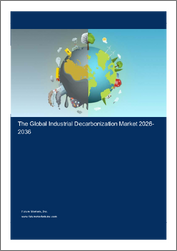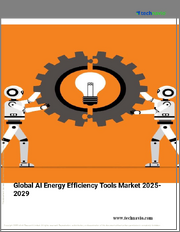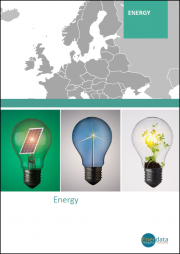
|
시장보고서
상품코드
1763931
세계의 산업용 에너지 효율 서비스 시장 : 산업 규모, 점유율, 동향, 기회, 예측 - 소프트웨어별, 용도별, 지역별 부문, 경쟁(2020-2030년)Industrial Energy -Efficiency Services Market - Global Industry Size, Share, Trends, Opportunity, and Forecast, Segmented By Software, By Application, By Region, By Competition, 2020-2030F |
||||||
세계의 산업용 에너지 효율 서비스 시장은 2024년에 212억 달러로 평가되었고, 예측 기간 CAGR 8.7%로 성장할 전망이며, 2030년에는 353억 달러에 이를 것으로 예측되고 있습니다.
이 성장을 뒷받침하는 것은 에너지 비용의 상승, 환경 규제 강화, 산업 사업 전체의 카본 풋 프린트 삭감에 대한 압력 증가입니다. 에너지 효율 서비스는 지속 가능성을 높이면서 운영 비용을 절감하는 전략적 접근법으로 받아들여지고 있습니다. EU의 에너지 효율 지령 및 미국의 에너지 의무화 등의 규제는, 다양한 정부로부터의 재정적 인센티브에 힘입어, 에너지 절약 기술의 채용을 가속시키고 있습니다. 게다가 투자자, 규제 당국, 소비자로부터의 기대의 고조가 산업계에 지속 가능성의 목표에 따른 사업 운영을 재촉하고 있습니다. 산업용 사물인터넷(IIoT), 인공지능(AI), 실시간 데이터 분석 등의 분야에서 기술 진보는 지속적인 에너지 감시 및 보다 스마트한 의사결정을 가능하게 하고 있습니다. 서비스로서의 에너지(EaaS) 및 에너지 퍼포먼스 계약(EPC) 등의 비즈니스 모델은, 도입에 대한 경제적 장벽을 한층 더 줄이고 있습니다. 화학, 석유화학, 발전 등의 분야가 최대 사용자이며, 탈탄소화와 산업 최적화 추진에 있어서 에너지 효율 서비스의 역할을 부각시키고 있습니다.
| 시장 개요 | |
|---|---|
| 예측 기간 | 2026-2030년 |
| 시장 규모(2024년) | 212억 달러 |
| 시장 규모(2030년) | 353억 달러 |
| CAGR(2025-2030년) | 8.7% |
| 급성장 부문 | 에너지 관리 소프트웨어 |
| 최대 시장 | 북미 |
시장 성장 촉진요인
에너지 비용 상승 및 업무 효율화 요구
주요 시장 과제
높은 초기 비용 및 투자 수익률(ROI) 불투명
주요 시장 동향
스마트 기술 및 디지털 에너지 관리 시스템의 통합
목차
제1장 개요
제2장 조사 방법
제3장 주요 요약
제4장 고객의 목소리
제5장 세계의 산업용 에너지 효율 서비스 시장 전망
- 시장 규모 및 예측
- 금액별
- 시장 점유율 및 예측
- 소프트웨어별(에너지 관리 소프트웨어, 분석 소프트웨어, 보고서 소프트웨어, 수요 반응 소프트웨어, 예지 보전 소프트웨어, 기타)
- 용도별(제조, 상업 빌딩, 유틸리티, 석유 및 가스, 수송, 기타)
- 지역별(북미, 유럽, 남미, 중동 및 아프리카, 아시아태평양)
- 기업별(2024년)
- 시장 맵
제6장 북미의 산업용 에너지 효율 서비스 시장 전망
- 시장 규모 및 예측
- 시장 점유율 및 예측
- 북미 : 국가별 분석
- 미국
- 캐나다
- 멕시코
제7장 유럽의 산업용 에너지 효율 서비스 시장 전망
- 시장 규모 및 예측
- 시장 점유율 및 예측
- 유럽 : 국가별 분석
- 독일
- 프랑스
- 영국
- 이탈리아
- 스페인
제8장 아시아태평양의 산업용 에너지 효율 서비스 시장 전망
- 시장 규모 및 예측
- 시장 점유율 및 예측
- 아시아태평양 : 국가별 분석
- 중국
- 인도
- 일본
- 한국
- 호주
제9장 중동 및 아프리카의 산업용 에너지 효율 서비스 시장 전망
- 시장 규모 및 예측
- 시장 점유율 및 예측
- 중동 및 아프리카 : 국가별 분석
- 사우디아라비아
- 아랍에미리트(UAE)
- 남아프리카
제10장 남미의 산업용 에너지 효율 서비스 시장 전망
- 시장 규모 및 예측
- 시장 점유율 및 예측
- 남미 : 국가별 분석
- 브라질
- 콜롬비아
- 아르헨티나
제11장 시장 역학
- 성장 촉진요인
- 과제
제12장 시장 동향 및 발전
- 합병 및 인수
- 제품 출시
- 최근 동향
제13장 기업 프로파일
- Schneider Electric SE
- Siemens AG
- Honeywell International Inc.
- Johnson Controls International plc
- ENGIE SA
- Eaton Corporation plc
- General Electric Company(GE)
- Danfoss Group
제14장 전략적 제안
제15장 기업 소개 및 면책사항
AJY 25.07.16The Global Industrial Energy-Efficiency Services Market was valued at USD 21.2 billion in 2024 and is projected to reach USD 35.3 billion by 2030, growing at a CAGR of 8.7% through the forecast period. This growth is being fueled by rising energy costs, stricter environmental regulations, and increasing pressure to reduce carbon footprints across industrial operations. Energy-efficiency services are being embraced as a strategic approach to cutting operational costs while enhancing sustainability. Regulations such as the EU's Energy Efficiency Directive and U.S. energy mandates are accelerating the adoption of energy-saving technologies, supported by financial incentives from various governments. In addition, rising expectations from investors, regulators, and consumers are prompting industrial players to align operations with sustainability goals. Technological advancements in areas like the Industrial Internet of Things (IIoT), artificial intelligence (AI), and real-time data analytics are enabling continuous energy monitoring and smarter decision-making. Business models such as Energy-as-a-Service (EaaS) and Energy Performance Contracting (EPC) are further reducing financial barriers to adoption. Sectors such as chemicals, petrochemicals, and power generation are among the largest users, highlighting the role of energy-efficiency services in advancing decarbonization and industrial optimization.
| Market Overview | |
|---|---|
| Forecast Period | 2026-2030 |
| Market Size 2024 | USD 21.2 Billion |
| Market Size 2030 | USD 35.3 Billion |
| CAGR 2025-2030 | 8.7% |
| Fastest Growing Segment | Energy Management Software |
| Largest Market | North America |
Key Market Drivers
Rising Energy Costs and the Demand for Operational Efficiency
A major driver of the industrial energy-efficiency services market is the continuous rise in global energy costs. Industries, especially those in manufacturing, cement, food processing, steel, and chemicals, are highly energy-intensive and vulnerable to fluctuations in energy pricing. Factors like geopolitical tensions, supply-demand imbalances, and the energy transition are contributing to increasing energy expenses, putting pressure on businesses to find cost-effective solutions. Energy-efficiency services provide targeted offerings such as audits, retrofitting, real-time monitoring, and system optimization that help companies reduce energy waste and improve efficiency. These services can yield energy savings ranging from 10% to 30%, leading to substantial cost reductions over time. Additionally, improved energy efficiency supports process stability, enhances equipment longevity, and boosts overall productivity-making it a key lever for operational excellence.
Key Market Challenges
High Initial Costs and Uncertain Return on Investment (ROI)
One of the main challenges in adopting industrial energy-efficiency services is the high upfront cost associated with implementing energy-saving measures. While long-term benefits are clear, many industrial businesses-especially SMEs-are hesitant to allocate capital toward energy audits, new equipment, and digital monitoring systems. Implementing technologies such as smart sensors, AI-driven analytics platforms, and high-efficiency motors often requires substantial investment. Furthermore, predicting the ROI of energy-efficiency projects is not always straightforward. Variables such as energy price volatility, changes in production demand, or inconsistent usage behavior can all impact expected savings. In many developing regions, the focus remains on immediate cost containment, making long-term efficiency investments less appealing. The absence of internal expertise in energy management also limits understanding of the potential benefits. These financial and knowledge-based barriers restrict adoption rates. Flexible financing approaches-like performance-based contracts-and greater awareness of the long-term advantages will be crucial to expanding market participation.
Key Market Trends
Integration of Smart Technologies and Digital Energy Management Systems
The integration of smart technologies into industrial energy management is a defining trend in the market. Solutions powered by the Industrial Internet of Things (IIoT), AI, machine learning (ML), and cloud-based analytics are enabling real-time energy optimization and predictive insights. Advanced energy management systems (EMS) equipped with smart sensors allow for continuous monitoring of energy consumption, equipment performance, and environmental parameters. These tools not only detect inefficiencies but also predict equipment malfunctions, optimize process loads, and schedule maintenance proactively. AI-driven analytics help industries move from reactive to predictive operations, reducing downtime and extending equipment life. Cloud-based platforms further enable remote access, multi-site coordination, and centralized control. This digital shift is transforming energy-efficiency services into intelligent, data-driven solutions that improve decision-making and operational outcomes.
Key Market Players
- Schneider Electric SE
- Siemens AG
- Honeywell International Inc.
- Johnson Controls International plc
- ENGIE SA
- Eaton Corporation plc
- General Electric Company (GE)
- Danfoss Group
Report Scope:
In this report, the Global Industrial Energy-Efficiency Services Market has been segmented into the following categories, in addition to the industry trends which have also been detailed below:
Industrial Energy-Efficiency Services Market, By Software:
- Energy Management Software
- Analytics Software
- Reporting Software
- Demand Response Software
- Predictive Maintenance Software
- Others
Industrial Energy-Efficiency Services Market, By Application:
- Manufacturing
- Commercial Buildings
- Utilities
- Oil & Gas
- Transportation
- Others
Industrial Energy-Efficiency Services Market, By Region:
- North America
- United States
- Canada
- Mexico
- Europe
- Germany
- France
- United Kingdom
- Italy
- Spain
- Asia Pacific
- China
- India
- Japan
- South Korea
- Australia
- South America
- Brazil
- Colombia
- Argentina
- Middle East & Africa
- Saudi Arabia
- UAE
- South Africa
Competitive Landscape
Company Profiles: Detailed analysis of the major companies present in the Global Industrial Energy-Efficiency Services Market.
Available Customizations:
Global Industrial Energy-Efficiency Services Market report with the given market data, TechSci Research offers customizations according to a company's specific needs. The following customization options are available for the report:
Company Information
- Detailed analysis and profiling of additional market players (up to five).
Table of Contents
1. Product Overview
- 1.1. Market Definition
- 1.2. Scope of the Market
- 1.2.1. Markets Covered
- 1.2.2. Years Considered for Study
- 1.2.3. Key Market Segmentations
2. Research Methodology
- 2.1. Objective of the Study
- 2.2. Baseline Methodology
- 2.3. Key Industry Partners
- 2.4. Major Association and Secondary Sources
- 2.5. Forecasting Methodology
- 2.6. Data Triangulation & Validation
- 2.7. Assumptions and Limitations
3. Executive Summary
- 3.1. Overview of the Market
- 3.2. Overview of Key Market Segmentations
- 3.3. Overview of Key Market Players
- 3.4. Overview of Key Regions/Countries
- 3.5. Overview of Market Drivers, Challenges, and Trends
4. Voice of Customer
5. Global Industrial Energy -Efficiency Services Market Outlook
- 5.1. Market Size & Forecast
- 5.1.1. By Value
- 5.2. Market Share & Forecast
- 5.2.1. By Software (Energy Management Software, Analytics Software, Reporting Software, Demand Response Software, Predictive Maintenance Software, Others)
- 5.2.2. By Application (Manufacturing, Commercial Buildings, Utilities, Oil & Gas, Transportation, Others)
- 5.2.3. By Region (North America, Europe, South America, Middle East & Africa, Asia Pacific)
- 5.3. By Company (2024)
- 5.4. Market Map
6. North America Industrial Energy -Efficiency Services Market Outlook
- 6.1. Market Size & Forecast
- 6.1.1. By Value
- 6.2. Market Share & Forecast
- 6.2.1. By Software
- 6.2.2. By Application
- 6.2.3. By Country
- 6.3. North America: Country Analysis
- 6.3.1. United States Industrial Energy -Efficiency Services Market Outlook
- 6.3.1.1. Market Size & Forecast
- 6.3.1.1.1. By Value
- 6.3.1.2. Market Share & Forecast
- 6.3.1.2.1. By Software
- 6.3.1.2.2. By Application
- 6.3.1.1. Market Size & Forecast
- 6.3.2. Canada Industrial Energy -Efficiency Services Market Outlook
- 6.3.2.1. Market Size & Forecast
- 6.3.2.1.1. By Value
- 6.3.2.2. Market Share & Forecast
- 6.3.2.2.1. By Software
- 6.3.2.2.2. By Application
- 6.3.2.1. Market Size & Forecast
- 6.3.3. Mexico Industrial Energy -Efficiency Services Market Outlook
- 6.3.3.1. Market Size & Forecast
- 6.3.3.1.1. By Value
- 6.3.3.2. Market Share & Forecast
- 6.3.3.2.1. By Software
- 6.3.3.2.2. By Application
- 6.3.3.1. Market Size & Forecast
- 6.3.1. United States Industrial Energy -Efficiency Services Market Outlook
7. Europe Industrial Energy -Efficiency Services Market Outlook
- 7.1. Market Size & Forecast
- 7.1.1. By Value
- 7.2. Market Share & Forecast
- 7.2.1. By Software
- 7.2.2. By Application
- 7.2.3. By Country
- 7.3. Europe: Country Analysis
- 7.3.1. Germany Industrial Energy -Efficiency Services Market Outlook
- 7.3.1.1. Market Size & Forecast
- 7.3.1.1.1. By Value
- 7.3.1.2. Market Share & Forecast
- 7.3.1.2.1. By Software
- 7.3.1.2.2. By Application
- 7.3.1.1. Market Size & Forecast
- 7.3.2. France Industrial Energy -Efficiency Services Market Outlook
- 7.3.2.1. Market Size & Forecast
- 7.3.2.1.1. By Value
- 7.3.2.2. Market Share & Forecast
- 7.3.2.2.1. By Software
- 7.3.2.2.2. By Application
- 7.3.2.1. Market Size & Forecast
- 7.3.3. United Kingdom Industrial Energy -Efficiency Services Market Outlook
- 7.3.3.1. Market Size & Forecast
- 7.3.3.1.1. By Value
- 7.3.3.2. Market Share & Forecast
- 7.3.3.2.1. By Software
- 7.3.3.2.2. By Application
- 7.3.3.1. Market Size & Forecast
- 7.3.4. Italy Industrial Energy -Efficiency Services Market Outlook
- 7.3.4.1. Market Size & Forecast
- 7.3.4.1.1. By Value
- 7.3.4.2. Market Share & Forecast
- 7.3.4.2.1. By Software
- 7.3.4.2.2. By Application
- 7.3.4.1. Market Size & Forecast
- 7.3.5. Spain Industrial Energy -Efficiency Services Market Outlook
- 7.3.5.1. Market Size & Forecast
- 7.3.5.1.1. By Value
- 7.3.5.2. Market Share & Forecast
- 7.3.5.2.1. By Software
- 7.3.5.2.2. By Application
- 7.3.5.1. Market Size & Forecast
- 7.3.1. Germany Industrial Energy -Efficiency Services Market Outlook
8. Asia Pacific Industrial Energy -Efficiency Services Market Outlook
- 8.1. Market Size & Forecast
- 8.1.1. By Value
- 8.2. Market Share & Forecast
- 8.2.1. By Software
- 8.2.2. By Application
- 8.2.3. By Country
- 8.3. Asia Pacific: Country Analysis
- 8.3.1. China Industrial Energy -Efficiency Services Market Outlook
- 8.3.1.1. Market Size & Forecast
- 8.3.1.1.1. By Value
- 8.3.1.2. Market Share & Forecast
- 8.3.1.2.1. By Software
- 8.3.1.2.2. By Application
- 8.3.1.1. Market Size & Forecast
- 8.3.2. India Industrial Energy -Efficiency Services Market Outlook
- 8.3.2.1. Market Size & Forecast
- 8.3.2.1.1. By Value
- 8.3.2.2. Market Share & Forecast
- 8.3.2.2.1. By Software
- 8.3.2.2.2. By Application
- 8.3.2.1. Market Size & Forecast
- 8.3.3. Japan Industrial Energy -Efficiency Services Market Outlook
- 8.3.3.1. Market Size & Forecast
- 8.3.3.1.1. By Value
- 8.3.3.2. Market Share & Forecast
- 8.3.3.2.1. By Software
- 8.3.3.2.2. By Application
- 8.3.3.1. Market Size & Forecast
- 8.3.4. South Korea Industrial Energy -Efficiency Services Market Outlook
- 8.3.4.1. Market Size & Forecast
- 8.3.4.1.1. By Value
- 8.3.4.2. Market Share & Forecast
- 8.3.4.2.1. By Software
- 8.3.4.2.2. By Application
- 8.3.4.1. Market Size & Forecast
- 8.3.5. Australia Industrial Energy -Efficiency Services Market Outlook
- 8.3.5.1. Market Size & Forecast
- 8.3.5.1.1. By Value
- 8.3.5.2. Market Share & Forecast
- 8.3.5.2.1. By Software
- 8.3.5.2.2. By Application
- 8.3.5.1. Market Size & Forecast
- 8.3.1. China Industrial Energy -Efficiency Services Market Outlook
9. Middle East & Africa Industrial Energy -Efficiency Services Market Outlook
- 9.1. Market Size & Forecast
- 9.1.1. By Value
- 9.2. Market Share & Forecast
- 9.2.1. By Software
- 9.2.2. By Application
- 9.2.3. By Country
- 9.3. Middle East & Africa: Country Analysis
- 9.3.1. Saudi Arabia Industrial Energy -Efficiency Services Market Outlook
- 9.3.1.1. Market Size & Forecast
- 9.3.1.1.1. By Value
- 9.3.1.2. Market Share & Forecast
- 9.3.1.2.1. By Software
- 9.3.1.2.2. By Application
- 9.3.1.1. Market Size & Forecast
- 9.3.2. UAE Industrial Energy -Efficiency Services Market Outlook
- 9.3.2.1. Market Size & Forecast
- 9.3.2.1.1. By Value
- 9.3.2.2. Market Share & Forecast
- 9.3.2.2.1. By Software
- 9.3.2.2.2. By Application
- 9.3.2.1. Market Size & Forecast
- 9.3.3. South Africa Industrial Energy -Efficiency Services Market Outlook
- 9.3.3.1. Market Size & Forecast
- 9.3.3.1.1. By Value
- 9.3.3.2. Market Share & Forecast
- 9.3.3.2.1. By Software
- 9.3.3.2.2. By Application
- 9.3.3.1. Market Size & Forecast
- 9.3.1. Saudi Arabia Industrial Energy -Efficiency Services Market Outlook
10. South America Industrial Energy -Efficiency Services Market Outlook
- 10.1. Market Size & Forecast
- 10.1.1. By Value
- 10.2. Market Share & Forecast
- 10.2.1. By Software
- 10.2.2. By Application
- 10.2.3. By Country
- 10.3. South America: Country Analysis
- 10.3.1. Brazil Industrial Energy -Efficiency Services Market Outlook
- 10.3.1.1. Market Size & Forecast
- 10.3.1.1.1. By Value
- 10.3.1.2. Market Share & Forecast
- 10.3.1.2.1. By Software
- 10.3.1.2.2. By Application
- 10.3.1.1. Market Size & Forecast
- 10.3.2. Colombia Industrial Energy -Efficiency Services Market Outlook
- 10.3.2.1. Market Size & Forecast
- 10.3.2.1.1. By Value
- 10.3.2.2. Market Share & Forecast
- 10.3.2.2.1. By Software
- 10.3.2.2.2. By Application
- 10.3.2.1. Market Size & Forecast
- 10.3.3. Argentina Industrial Energy -Efficiency Services Market Outlook
- 10.3.3.1. Market Size & Forecast
- 10.3.3.1.1. By Value
- 10.3.3.2. Market Share & Forecast
- 10.3.3.2.1. By Software
- 10.3.3.2.2. By Application
- 10.3.3.1. Market Size & Forecast
- 10.3.1. Brazil Industrial Energy -Efficiency Services Market Outlook
11. Market Dynamics
- 11.1. Drivers
- 11.2. Challenges
12. Market Trends and Developments
- 12.1. Merger & Acquisition (If Any)
- 12.2. Product Launches (If Any)
- 12.3. Recent Developments
13. Company Profiles
- 13.1. Schneider Electric SE
- 13.1.1. Business Overview
- 13.1.2. Key Revenue and Financials
- 13.1.3. Recent Developments
- 13.1.4. Key Personnel
- 13.1.5. Key Product/Services Offered
- 13.2. Siemens AG
- 13.3. Honeywell International Inc.
- 13.4. Johnson Controls International plc
- 13.5. ENGIE SA
- 13.6. Eaton Corporation plc
- 13.7. General Electric Company (GE)
- 13.8. Danfoss Group
14. Strategic Recommendations
15. About Us & Disclaimer
(주말 및 공휴일 제외)


















